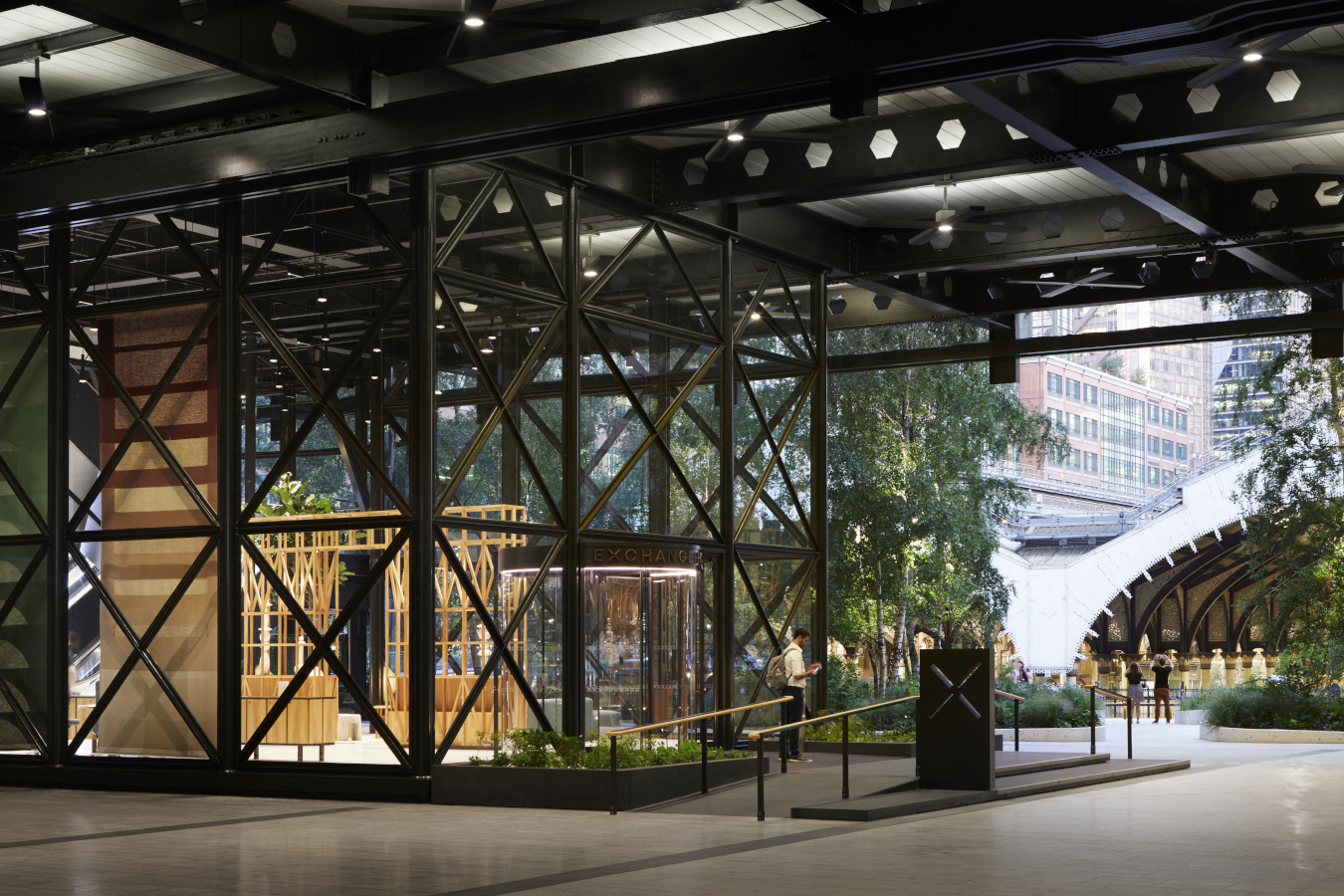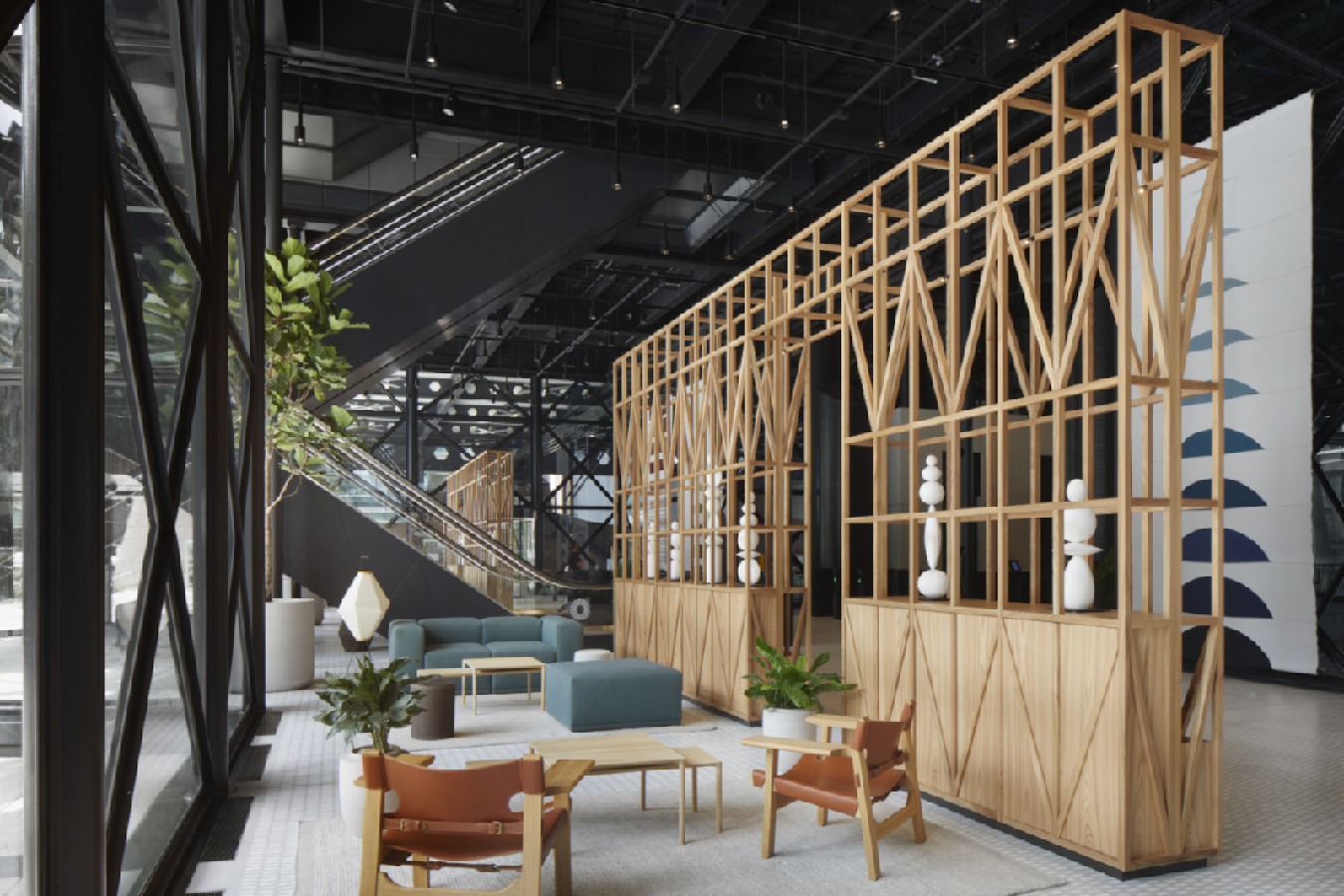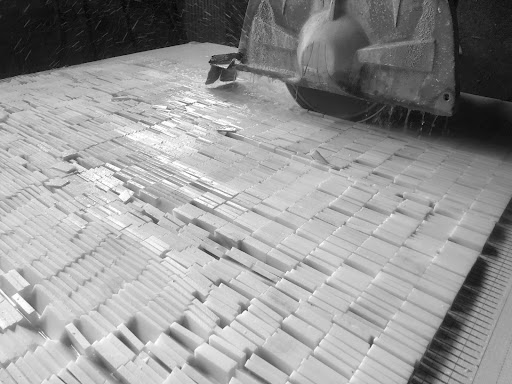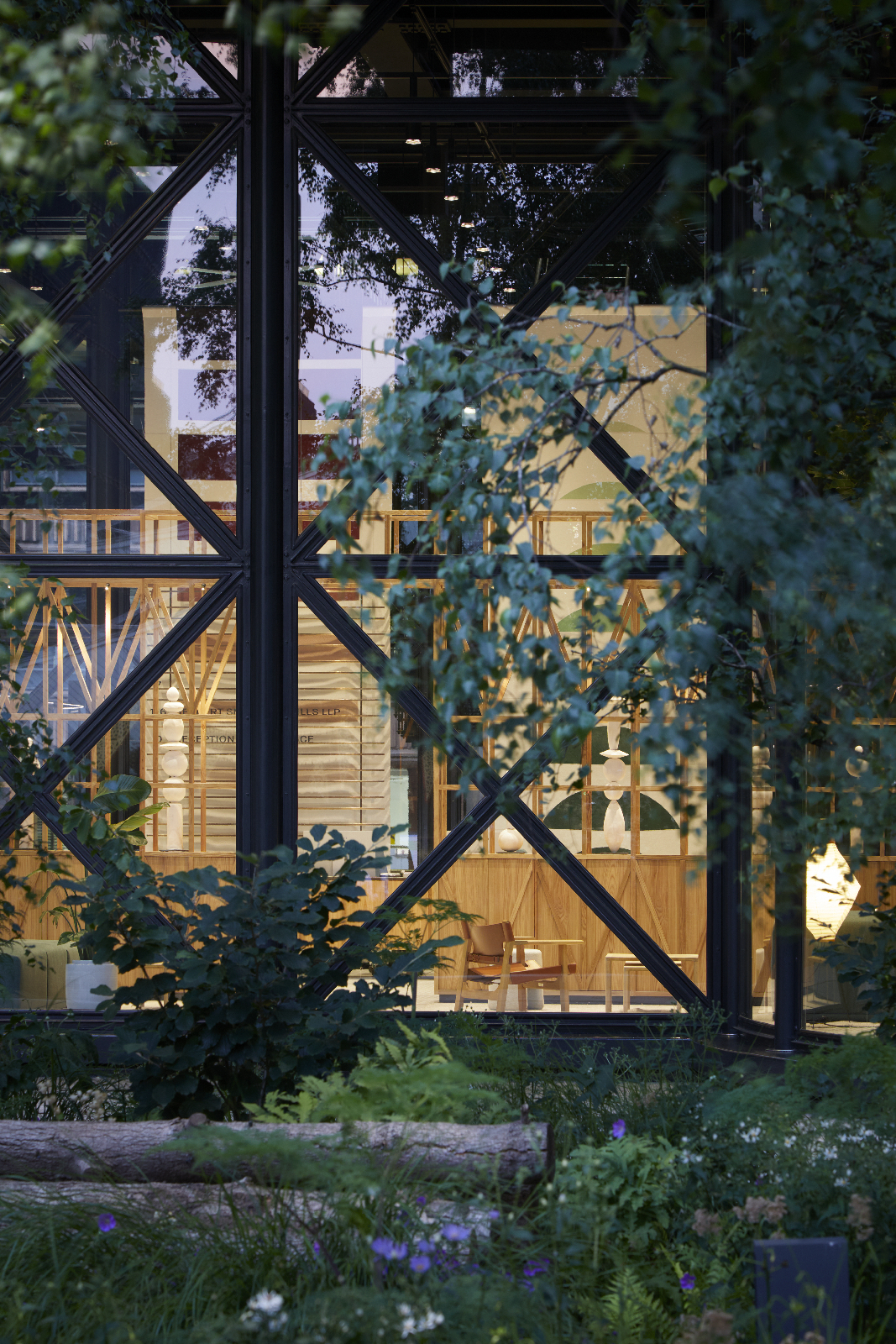London's Exchange House gets a sustainable revamp
London's iconic Exchange House in Broadgate has been transformed for the 21st century by Piercy&Company

Exchange House's distinctive black parabolic arches and exposed industrial trusses, designed by SOM in 1990, make it a landmark in the cityscape of London's Broadgate campus - winning the AIA’s Twenty-five Year Award in 2015. Fast forward to 2023 and London architecture studio Piercy&Company was commissioned by British Land and GIC to redesign the iconic structure's interior, aiming to transform its shared spaces, improving tenant amenities, while also pushing the boundaries of sustainable architecture, employing circular economy principles.

Exchange House's reception hall brings new sense of warmth
Piercy&Company, a studio that is well versed in transforming historically sensitive spaces, tapped into British Land’s vast archive, using original hand-drawn sketches of the building to inform its redesign. By making the most of the transparency provided by the original continuous ground floor glazing and double height, the architects established a new synergy between the interior and freshly landscaped Exchange Square (by DSDHA) outside. This was achieved through the introduction of layered internal planting, natural materials, and a colour palette that mirrors the seasonal green scheme of the garden. By playing with the concept of a ‘garden room’, the interior changes have brought the outside in, and with it, a palpable sense of warmth to the reception hall.

Geometric motifs create themes and moments
Large-scale tapestry works by Kangan Arora, an Indian-born and London-based textile designer, were introduced. The pieces feature colourful abstractions of the building’s characteristic parabolic arches, steel trusses and beams. Meanwhile, the elm wood lattice shelving units designed by the architects and made by Benchmark, hold delicate raku fired porcelain sculptures by ceramicist Nadine Bell, introducing new textures and tones to the space. The unit also mirrors the building's overall exposed structure in its characteristic joinery - a geometric motif that is further echoed in the design of the office level bathrooms.

Embracing circular economy principles
In keeping with circular economy principles that are core to the studio’s overall practice, over 4,000 sq ft of existing Pentelikon marble was carefully removed from the site, cut locally, and hand-laid with cement to create terrazzo flooring for the ground floor reception. Only 40% of the existing marble was used in the reception, allowing for this style to extend to flooring in lift lobbies on other floors, as well as sinktops on the office floor bathrooms. The warm, uniquely-designed terrazzo brings a welcomed contrast in tone and texture to the original building's omnipresent black steel, creating a new grounding feeling to the shared areas.

There's more to come; plans are underway to create a new 200 sq m rooftop terrace, tapping into a previously unused space in the building. This will improve the existing range of tenant amenities for working and hosting. With a design the promotes biodiversity and a biophilic approach, Piercy&Company continues to support sustainability, while also creating new moments of rest, community and connection with nature.
From peeling back layers to reveal original features and details, to opening up new ways through that allow people to pass under the belly of the building, and creating dialogues inside and throughout the building, Piercy&Company has made forward-thinking yet respectful changes to an architectural icon, subtly transforming it for the 21st century.

Receive our daily digest of inspiration, escapism and design stories from around the world direct to your inbox.
Nana Ama Owusu-Ansah is a writer and photographer from London. She first wrote for Wallpaper* in 2021, in a series on the new vanguard of African designers practising in Africa and its diaspora. She is drawn to projects centring on decolonial approaches to art, architecture, as well as community and sustainability. Nana Ama read Economics and Spanish at University of St Andrews, and, as an avid linguist, is passionate about using accessible language to invite new audiences to engage in design discourse.
-
 Year in review: the shape of mobility to come in our list of the top 10 concept cars of 2025
Year in review: the shape of mobility to come in our list of the top 10 concept cars of 2025Concept cars remain hugely popular ways to stoke interest in innovation and future forms. Here are our ten best conceptual visions from 2025
-
 These Guadalajara architects mix modernism with traditional local materials and craft
These Guadalajara architects mix modernism with traditional local materials and craftGuadalajara architects Laura Barba and Luis Aurelio of Barbapiña Arquitectos design drawing on the past to imagine the future
-
 Robert Therrien's largest-ever museum show in Los Angeles is enduringly appealing
Robert Therrien's largest-ever museum show in Los Angeles is enduringly appealing'This is a Story' at The Broad unites 120 of Robert Therrien's sculptures, paintings and works on paper
-
 Arbour House is a north London home that lies low but punches high
Arbour House is a north London home that lies low but punches highArbour House by Andrei Saltykov is a low-lying Crouch End home with a striking roof structure that sets it apart
-
 A former agricultural building is transformed into a minimal rural home by Bindloss Dawes
A former agricultural building is transformed into a minimal rural home by Bindloss DawesZero-carbon design meets adaptive re-use in the Tractor Shed, a stripped-back house in a country village by Somerset architects Bindloss Dawes
-
 RIBA House of the Year 2025 is a ‘rare mixture of sensitivity and boldness’
RIBA House of the Year 2025 is a ‘rare mixture of sensitivity and boldness’Topping the list of seven shortlisted homes, Izat Arundell’s Hebridean self-build – named Caochan na Creige – is announced as the RIBA House of the Year 2025
-
 In addition to brutalist buildings, Alison Smithson designed some of the most creative Christmas cards we've seen
In addition to brutalist buildings, Alison Smithson designed some of the most creative Christmas cards we've seenThe architect’s collection of season’s greetings is on show at the Roca London Gallery, just in time for the holidays
-
 In South Wales, a remote coastal farmhouse flaunts its modern revamp, primed for hosting
In South Wales, a remote coastal farmhouse flaunts its modern revamp, primed for hostingA farmhouse perched on the Gower Peninsula, Delfyd Farm reveals its ground-floor refresh by architecture studio Rural Office, which created a cosy home with breathtaking views
-
 A revived public space in Aberdeen is named Scotland’s building of the year
A revived public space in Aberdeen is named Scotland’s building of the yearAberdeen's Union Terrace Gardens by Stallan-Brand Architecture + Design and LDA Design wins the 2025 Andrew Doolan Best Building in Scotland Award
-
 The Architecture Edit: Wallpaper’s houses of the month
The Architecture Edit: Wallpaper’s houses of the monthFrom wineries-turned-music studios to fire-resistant holiday homes, these are the properties that have most impressed the Wallpaper* editors this month
-
 A refreshed 1950s apartment in East London allows for moments of discovery
A refreshed 1950s apartment in East London allows for moments of discoveryWith this 1950s apartment redesign, London-based architects Studio Naama wanted to create a residence which reflects the fun and individual nature of the clients